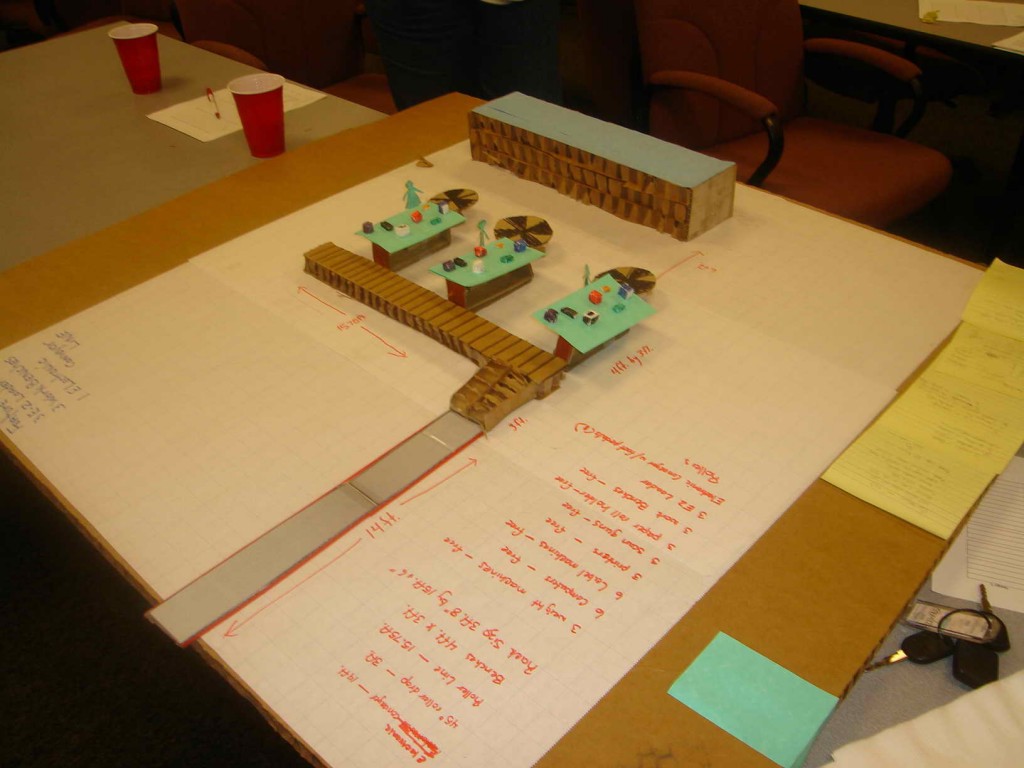Simulation is the act of imitating or mimicking the behavior of some situation or some process by means of something suitably analogous. The imitation of a process can be used for debugging, and validating process design changes or use to communicate or train associates.
Simulations can be used for:
- process design
- testing new ideas
- debugging designs
- testing understanding
- gaining commitment
- testing alternatives
- communicating and training
Sometimes the simulation is role playing theater, other times the ‘game’ has logic and is reproducible, with known inputs and expected outputs. The photo here is of a recent workshop where we studied how the warehouse dock floor would look after changing the pick waving rules and packaging. Here outbound goods will be switching from trailer loose stack to returnable shipping containers.
Would we need more floor space? Do we have enough pickers and loaders? How do we pick and load multiple deliveries nose-to-tail?
While computer modeling is certainly a consideration the use of table-top simulation has many benefits:
- Many problems are difficult or expensive to test in real life
- Many people process information visually
- A number of alternatives can be quickly tested as the team uncovers issues and finds solutions
- Simulation costs are very low; you don’t need expensive software or extensive training
Here’s the process we used to build our ‘war game’:
- Decide what we wanted to test; i.e. the output – in this case floor loading and labor resources
- Gather the input – shipping orders for a typical busy day, number of pickers by zone, number of packing loaders, shift schedules, picking and loading rates, floor space and equipment dimensions (carts, containers, trailers, etc)
- Determine the constraints, rules; e.g. number of loaders per trailer, length of breaks
- Document assumptions; e.g any trailer can be at any dock door, break and lunches can be staggered, etc.
- Be creative and design the game pieces (entities) and determine their quantities; in this exercise carts, containers, bins, trailers
- Scale physically (1inch=5feet), scale time (1 day of 10 hours took an hour of game time)
- Collect metrics, such as; line per hour, wave start and end time, trailer load duration, number of floor spaces occupied, number of time floor space turned over, number of workers needed
Once the model ‘behaved’ like the current process the team began introducing rule changes which uncovered obstacles. One of the first changes was reducing the wave batch size from 90 minutes to 30. Next came changes to packaging and trailer loading. By the end of the workshop new procedures were debugged and ready for full scale dry runs leading to a live implementation next month. Stay tuned …
